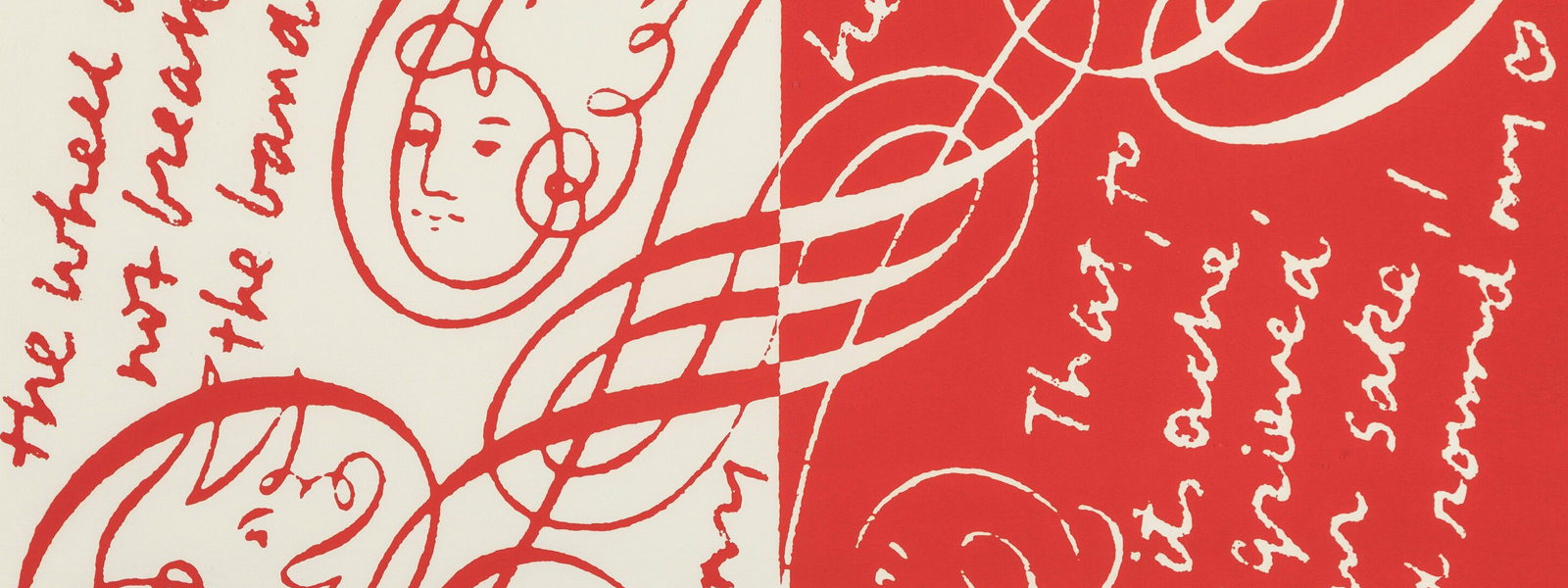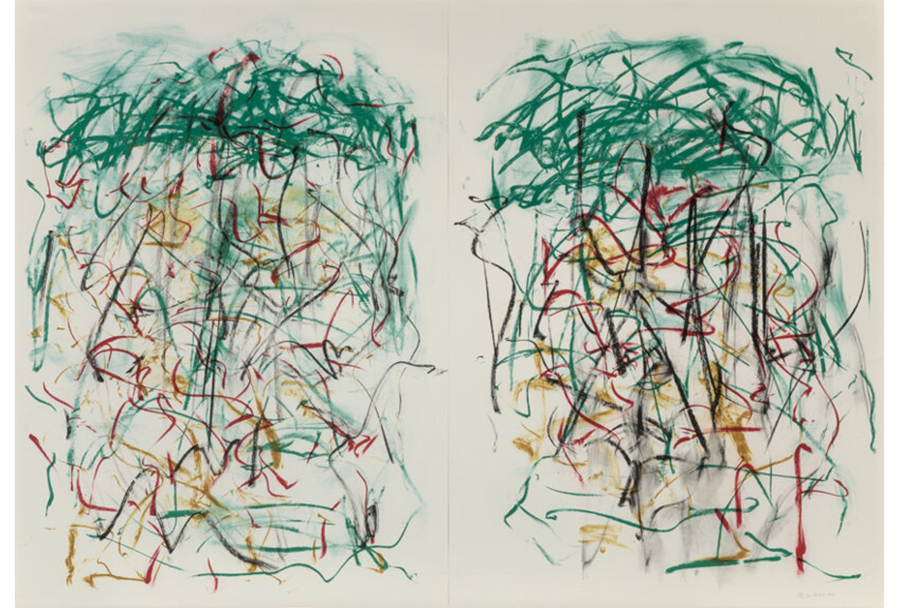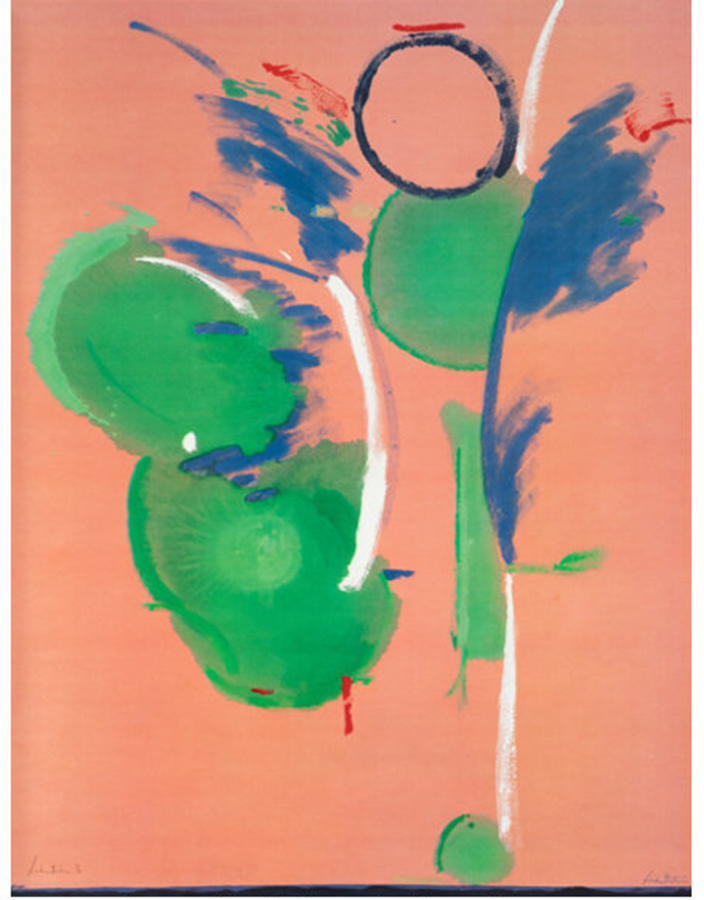IN HONOR OF WOMEN’S HISTORY MONTH, WE TAKE AN UP-CLOSE LOOK AT THE WORK OF FOUR INFLUENTIAL FEMALE PRINTMAKERS
By Rebecca Van Norman and Desiree Pakravan
In these first decades of the new century, we’ve seen a significant uptick in galleries representing female artists, as well as art fairs and museums increasing their exhibitions of works by women. In 2019, the Venice Biennale, a major international exhibition and the bellwether of contemporary art, finally achieved gender parity, and the 2022 edition made history for featuring a vast majority of female artists for the first time.
Heritage Auctions is thrilled to continue the trend with its April 18 Prints & Multiples Signature® Auction, which features works by four notable women artists who’ve impacted the practice of printmaking. From the abstraction of Joan Mitchell and Helen Frankenthaler to the realism of Vija Celmins and the Pop Art of Corita Kent, women artists have turned to printmaking to sharpen their technical skills, open their creative and professional channels, and access a wider audience. Each of these artists displays a unique approach to printmaking, though they’re united in their independence, perseverance and guile.
Joan Mitchell
The Sunflowers series was the last that Joan Mitchell printed before her death in 1992. Ken Tyler, the master printer for this body of work, says of his final partnership with Mitchell, “We were two feisty people. She is using the chalks to give her the extra mileage of diluting the color to a wash-like thing, having the ability to smear with her hands and with the chalk. She comes up with a surface that she hasn’t seen before in printmaking. To do this and to leave it alone is quite an accomplishment.”
The series is highly representational of Mitchell’s body of work. It is energetic, rageful, graceful, always articulate and, at times, even a bit awkward. Sunflowers I, which is offered in the April 18 auction, features related images juxtaposed to form a diptych and demonstrates two polarities of Mitchell’s style. The downpouring of angry energy into the crayon strokes becomes the subject, which is darker than one might associate with the bright and vibrant sunflower. The blotchy smears atop a jagged support are gloomy indeed.
Enlarge
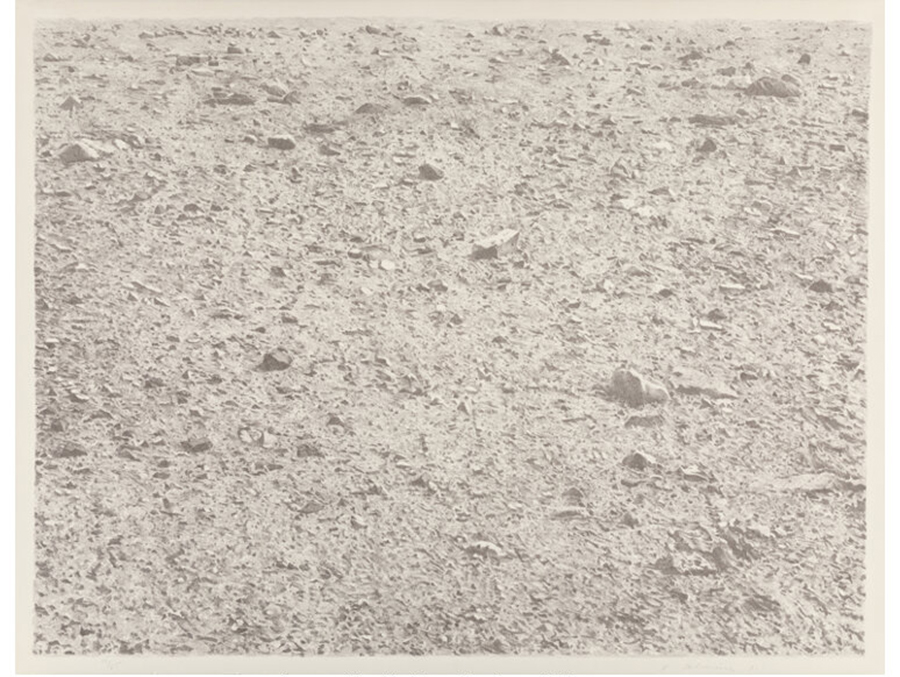
Vija Celmins
Unlike Mitchell, Vija Celmins is not a prolific printmaker, having made only around 100 prints thus far. She toils for months or even years on a single print, intricately working and reworking its surface until she receives her desired result. As opposed to the high energy of Mitchell’s prints, Celmins’ work is a master class in quietude and careful decision-making. She first began printmaking with Tamarind Institute and was drawn to lithography and working with stone because of how labor intensive it is. She purposefully challenges herself with difficult situations, both technically and conceptually, and has famously said on multiple occasions, “Art is in the making.”
Celmins’ Untitled (Desert) from 1971, also featured in the April auction, is one of the artist’s early works before she took a long break from printmaking. When Celmins spoke about this work in October 2022 after receiving the Jordan Schnitzer Award for Excellence in Printmaking, she said, “I started going out into the desert, and [as a European] this was a great experience for me. You can look so close and so very far. The work projects really far, and when you come up to it you begin to see other aspects of it. The distance invites you in. You begin to identify with the surface.”
Celmins draws a comparison between the surfaces she sees and the ones she manipulates. Throughout her career, she has strived to close the gap, to merge the space between what is far and what is close. Her works are an obsession to re-describe an experience, appreciating that a three-dimensional experience cannot be faithfully represented in a two-dimensional medium. Yet Celmins is compelled to tackle this age-old artistic challenge.
Helen Frankenthaler
Helen Frankenthaler was a major contributor to the art historical canon of postwar American Art. Inspired by notable Abstract Expressionist artists like Jackson Pollock and Hans Hofmann, she was active as a painter for nearly six decades and produced a vital body of work that was ever-changing and remarkable. Her large-scale paintings, consisting of fluid shapes, abstract brushstrokes and lyrical gestures, are typically identified with the Ab Ex movement, and her style is notable for its emphasis on spontaneity. As Frankenthaler once said, “A really good picture looks as if it’s happened at once.”
In 1957, Frankenthaler began to experiment with linear shapes and more organic, rounded forms, and in the ’60s her style shifted toward the exploration of symmetrical paintings as she began to place strips of colors near the canvas edges. Throughout the ’70s Frankenthaler experimented with large, abstract forms as she shifted to more simplified compositions with softer hues and muted colors. She used large canvases and often oil paints that she heavily diluted with turpentine, a technique that she named “soak stain.” This allowed for the colors to soak directly into the canvas, creating a liquefied and luminous effect that strongly resembles watercolor.
Frankenthaler employed this technique in her prints as well. Created from four color screens, Mary Mary, another work offered in the auction, features gestural swatches of green, purple, white and black against a bright red backdrop. It is both vibrant and gentle, offering a beautiful combination of liveliness and refinement.
Enlarge
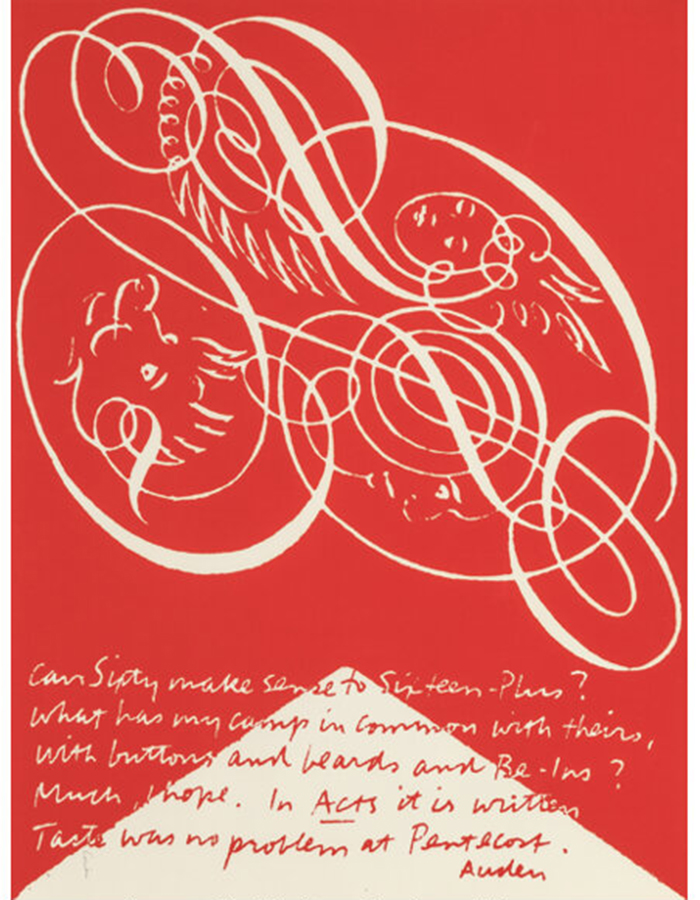
Corita Kent
Corita Kent, aka Sister Mary Corita, began her career as a sister of the Immaculate Heart of Mary in Los Angeles and later served as both an educator and activist at Immaculate Heart College. Kent’s primary medium was screenprinting; during her prime, from the 1960s through the 1980s, the self-taught artist’s unique approach to printmaking pushed the boundaries of two-dimensional media. Kent’s emphasis on printmaking was partly due to her wish to make art accessible to a wider audience.
Her animated screenprints and drawings incorporated widely recognizable slogans and excerpts from her favorite writers. While her earlier works are inspired by civil rights movements and antiwar protests, the majority emphasize love, peace and happiness. Originally completed in 1968, Kent’s International Signal Code Alphabet encompasses 26 kaleidoscopic serigraphs integrating scripture, typography, images, icons and the maritime flags of the International Code of Signals. This portfolio is iconic of the artist’s work, and Heritage is excited to offer the series in its April 18 auction.
If you have questions about upcoming Prints & Multiples lots or wish to consign your prints, contact Rebecca Van Norman at RebeccaV@HA.com or 214.409.1772, or Desiree Pakravan at DesireeP@ha.com or 310.492.8621.
 REBECCA VAN NORMAN is Director of Prints & Multiples at Heritage Auctions.
REBECCA VAN NORMAN is Director of Prints & Multiples at Heritage Auctions. DESIREE PAKRAVAN is Consignment Director of Modern & Contemporary Art at Heritage Auctions.
DESIREE PAKRAVAN is Consignment Director of Modern & Contemporary Art at Heritage Auctions.
